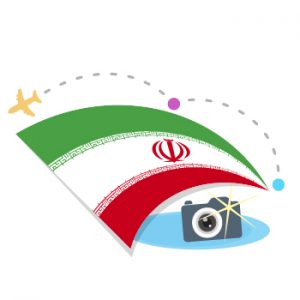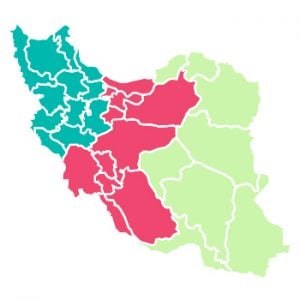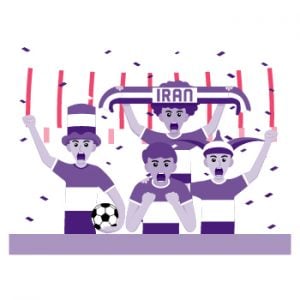
Endangered Language Jowshaqani
Jowshaqani is an endangered central Iranian dialect. If you’re interested in linguistics, this article is for you. In it, we will discuss the endangered language Jowshaqani, other Iranian languages’ central dialects, and why languages become endangered.
Why is it important to protect the language from dying from the simple impact of language loss? So, if you are a linguistic freak, then let’s dive into the origin of the Jowshaqani language.
Endangered language Jowshaqani
Jowshaqani is an Iranian central dialect. This language has beautiful literature and very strong grammar. People in towns of central Iran used to speak this language frequently. But with time, Persian became the dominant language in all towns and villages in Iran. A Central Iranian language is spoken in the township of Jowshaqan in Iran’s northern Isfahan region.
The township of Jowshaqan lies 120 kilometers north of Isfahan, on the outskirts of an area where Central Iranian dialects are spoken. It has a population of 3500 people. Currently, less than 600 speakers of Jowshaqani speak it, making it an endangered language.
Language Affiliation
If we say Jowshaqani is rooted in a group of central Iranian dialects it would not be wrong. Jowshaqani is affiliated with many other indigenous languages like other dialects of the Kashan district. It is very much familiar to Central Plateau dialects.


Is Persian a reason for endangering other dialects in Iran?
The main language of Iran is Persian. It is the most spoken language of the Iranian language family. It is a very wide language that has several dialects. In addition, there are other languages that people speak in Iran, such as Hamadan, Yazd, Tehran, etc. All these languages are very ancient. The affiliation is with the wind Tales and Tati languages, which people speak in different regions of northwestern Persia to northern Azerbaijan.
The most famous dialects of the Iranian language family are Northwest Iranian dialects and Southwestern languages. The dominance of Persian in Persia has led to the extinction of local dialects in major cities and many small towns and villages, where only the elderly speak or remember some of the previous dialects. Persian is not necessarily the reason for endangering other dialects in Iran; rather, factors such as urbanization, globalization, and socio-political dynamics contribute to the decline of regional languages, including Northwest Caucasian and other endangered languages in the country.
Whenever we hear about Iran, the first and last language that comes into mind is Persian. No doubt, it is their national language, but its dominance over other neighboring languages has resulted in language loss as well. That is, languages like Jowshaqani are endangered languages. And many nonendangered languages also do not get that much appreciation from locals.
Beginning in the early Islamic years, Turkic dialects in the northern and western regions of the Central dialects area have had a similar role in displacing native Iranian dialects. However, there is significant resistance to the infiltration of Persian and Turkic, and several indigenous dialects have been preserved. Religious minorities provide information on the dialects of several cities where Persian is currently spoken.
Importance of languages and impact of endangered languages
It is impossible to overestimate the value of languages. They are a significant communication tool and vital link between people. Humans improve and rise above other species due to their ability to communicate. If it hadn’t been for languages, we would have been like wild animals with no means of communicating.
More than only new words and accents make up a language. It’s like sponges that absorb the culture, ceremonies, and traditions and store them within themselves. Through the literature of a given language, generations pass on their culture to the next. For its citizens, its symbols and letters are works of art. Language is alive and well in the hands of those who speak it. They’ve lost touch with the fact that their speaker base is dwindling.
Languages are important because they can convey culture and heritage, especially Indigenous languages like Tok Pisin, Northwest Caucasian, and others. However, the decline of fluent speakers and the prevalence of extinct and dormant languages underscore the urgent need for preservation efforts to protect linguistic diversity and prevent the loss of invaluable cultural treasures.
The linguistic diversity in North America, South America, Central Asia, East Asia, Southeast Asia, and Northern Australia reflects various mixed languages and single languages, emphasizing the importance of linguistic documentation. In regions like the Northern Territory and the Solomon Islands, personal communication and traditional knowledge are deeply rooted, making the Catalogue of Endangered Languages crucial to address speaker number trends and safeguard unclassified and endangered languages such as Tok Pisin, Northeast Caucasian, and Southern Arawakan.
Initiatives like Ethnologue (Simons & Fennig 2017) underscore the importance of languages and the impact of endangered languages. This organization emphasizes linguistic documentation for Australian and Austronesian languages. Recognizing the cultural knowledge embedded in these distinct, separate languages is crucial for preserving linguistic diversity and the communities of native speakers.
Language and culture
Languages, like humans and other living things, require care and attention. They also require someone to keep them alive in their minds to avoid extinction. What if their loved ones abandon them? As a result, that particular language is extinguished. And the term “language” denotes the end of an epoch! Future generations will be deprived of its essence.
Many languages have existed for centuries. However, they are on the verge of extinction. About 3000 languages have less than 10,000 speakers, for example, and the number is shrinking all the time. People are losing touch with their original languages in pursuing modernization and success.


In other words, people are unwittingly severing ties with their traditions. The extinction of any language costs the ethnic and social values of that particular society. One of those endangered languages is the Jowshaqani language. Language death is the death of the whole culture. New languages have replaced old languages, but the loss of language can never be compensated by any means.
Preliminary documentation is vital in understanding the intricate relationship between language and culture, especially when dealing with Austronesian languages and Caucasian languages. Recognizing the wealth of cultural knowledge embedded in these languages is essential for fostering meaningful connections with native speakers and preserving linguistic diversity.
Preserving language and culture involves recognizing the importance of linguistic documentation and personal communication, particularly in regions like Australia and those with unique language families such as Quechua II. Cultural knowledge plays a pivotal role in understanding mixed languages and the significance of maintaining one’s primary language as a separate, integral part of cultural heritage.
Indigenous Languages:
Indigenous languages are native to a specific region or community and have been spoken by the original inhabitants of that area for generations. These languages are deeply rooted in the culture, history, and identity of the indigenous peoples who use them. Indigenous languages are often distinct from official or majority languages in a country and may be spoken by relatively small, specific communities.
Many indigenous languages around the world are endangered due to various factors, including cultural assimilation, migration, and the influence of dominant languages. Efforts are being made globally to preserve and revitalize indigenous languages as they are crucial components of the rich tapestry of human linguistic diversity. Recognizing and supporting the use of indigenous languages contributes to preserving indigenous cultures and promoting linguistic diversity.
Urgent documentation and preservation efforts by UNESCO are underway to safeguard a variety of indigenous languages, including Caucasian languages and African languages, which face the threat of extinction due to their dormant status and dwindling number of fluent speakers. Audio recordings play a crucial role in capturing the richness of these languages, ranging from national languages to Tok Pisin, ensuring their legacy endures even as some become extinct.
Unclassified Languages:
“Unclassified languages” refer to languages that have not been systematically categorized or grouped into established language families or linguistic classifications. Language classification typically involves grouping languages based on shared features, vocabulary, and historical relationships. Unclassified languages may lack sufficient data, documentation, or linguistic connections to be definitively linked to a specific language family.
Sometimes, unclassified languages may be spoken by small, isolated communities, making it challenging for linguists to determine their linguistic affiliations. Alternatively, insufficient research or documentation may contribute to the lack of classification. Linguists and researchers often make efforts to study and classify these languages, contributing to our understanding of linguistic diversity.
Unclassified languages often face extinction due to cultural assimilation, displacement, and insufficient documentation. Small, isolated communities may struggle to pass down their languages, leading to a lack of intergenerational transmission. As a result, these unclassified languages may disappear without leaving sufficient linguistic data for classification, contributing to their extinction.
Distinct Languages:
Distinct languages are separate and different from one another in terms of their linguistic features, vocabulary, grammar, and, often, their historical development. Each distinct language has its own unique set of characteristics that distinguish it from other languages. For example, English and Mandarin Chinese are distinct languages, as they have different linguistic structures and are not mutually intelligible.
The term “distinct languages” emphasizes the lack of mutual intelligibility between linguistic varieties, highlighting their independence and separate identity within the broader spectrum of human languages.
How is UNESCO saving endangered languages?
Human beings have another essential and beautiful treasure: languages. Languages are a beautiful form of art and a means of communication. A language is a collection of specific utterances that do not emerge suddenly but develop gradually over many years and expand over time. It is a slow evolutionary process, which is what distinguishes it.
It’s also not only about knowing how to speak that particular language. However, if we lost a language, we would also lose all of the knowledge that language has uncovered. The United Nations Educational, Scientific, and Cultural Organization (UNESCO) maintains a section identifying the world’s critically endangered languages.
They aim to revive the least spoken languages, which are on the verge of extinction. The world’s least-spoken languages, such as Chinese, English, and Brazilian, are just as important as the world’s most-spoken ones.
UNESCO’s efforts in preserving endangered languages extend globally, encompassing a diverse array from Australian languages to Northwest Caucasian, focusing on linguistic documentation and urgent preservation of precious field recordings. Through initiatives spanning Central Australia to Africa, UNESCO safeguards dormant and extinct languages, non-indigenous sign languages, and creole languages, aiming to protect fourteen languages from extinction and foster linguistic diversity worldwide.
UNESCO is actively involved in saving endangered languages by recognizing the value of linguistic diversity. Efforts extend to regions like South Asia, Central America, and Northern Vanuatu Vanuatu, where Austronesian languages, Indo-European languages, and unique language families like Ancash Quechua and Southern Bantoid are addressed. UNESCO’s initiatives, such as Ethnologue (Simons & Fennig), aim to preserve native languages and promote the use of primary languages as national languages, safeguarding the rich heritage of mixed languages and unclassified languages.
Endangered languages
Many African, Canadian, European, and Asian languages are becoming endangered daily. Species languages, like cultures and monuments, are vital to preserve. UNESCO has an initiative called World’s Altas of Language.
This is to safeguard and preserve endangered languages. They look for endangered languages and strive to discover native speakers or people who know them to preserve them. Cultures, monuments, and species, as well as languages, are also very important to preserve.
Preserving endangered languages involves understanding the distinct languages spoken by elderly speakers, especially in regions like Australia, where there are Aboriginal languages and Caucasian languages. Language solutions must account for the cultural knowledge embedded in these native languages, fostering personal communication and ensuring a connection to the heritage of fluent speakers in their primary language.
In Central Vanuatu, the Caucasian languages spoken by native speakers are facing a concerning decline in fluent speakers, echoing a trend observed in Costa Rica concerning endangered languages.
So, to protect endangered languages and to preserve them UNESCO has a project named World’s Altas of language. They search endangered languages, find their native speakers, or the people who know the language and try to preserve them.
Conclusion
Today’s humanity did not discover all of today’s information. As a result, losing any language means losing all of the knowledge discovered in that language. It’s a centuries-long evolutionary process. Without the knowledge our forefathers learned millions of years ago, we would not have today’s technologies.
Languages pass down knowledge to generations, so it is important to protect them. Knowledge is transmitted from one generation to another and keeps growing over time. But if no steps are taken to preserve its speakers, the number of speakers decreases. Its existence falls into jeopardy, and soon, it starts to go extinct. It is also not only about linguistic knowledge of that specific language.
But if we lose a language, we also lose all the knowledge discovered by that language. Only old languages become endangered, and today’s humans do not discover the knowledge of science, the arts, and other things of the world.

Cultural Heritage and Language Policies
Indigenous communities around the world serve as custodians of invaluable linguistic heritage, encompassing rich language communities that reflect centuries of cultural evolution. The diversity of languages within these communities is a testament to the intricacies of human expression and the unique ways in which societies interact with their environments. Efforts toward language preservation are crucial in safeguarding this diversity, ensuring that future generations can connect with their cultural roots and ancestral knowledge. In the context of the Americas, the vast array of indigenous languages, from Navajo to Quechua, underscores the significance of linguistic diversity within these communities. The preservation of American languages not only fosters cultural resilience but also contributes to a more inclusive and enriched societal tapestry, honoring the multifaceted legacy of Indigenous peoples throughout the continent.
Language policies play a pivotal role in shaping human cognition and facilitating intercultural dialogue in diverse societies. By establishing guidelines for the acquisition and usage of additional languages, these policies influence how individuals perceive and interact with the world around them. Through promoting multilingualism and fostering a supportive environment for language learning, policymakers encourage cognitive flexibility and enhance communication across cultural boundaries. Intercultural dialogue thrives when individuals have the opportunity to engage with others in their native tongues while also mastering additional languages. Effective language policies recognize the intrinsic value of linguistic diversity and strive to create inclusive spaces where all voices are heard and respected.
Preserving Indigenous Languages and Heritage
Native American communities, alongside indigenous populations in Latin America, have long advocated for the preservation and recognition of their native languages. The United Nations, through its initiatives, including those by the United Nations Educational, Scientific and Cultural Organization (UNESCO), supports these efforts by promoting linguistic diversity and cultural heritage. While many of these native languages are not recognized as official languages in their respective countries, the UN’s work underscores their cultural significance and the need for their revitalization. This global advocacy helps ensure that native languages are preserved for future generations, maintaining the rich linguistic and cultural tapestry of indigenous peoples.
In the United States, various academic and cultural institutions often collaborate to preserve and study significant historical sites, many of which are designated as UNESCO World Heritage sites. Scholars conducting research on these sites might reference archives like the Wayback Machine to access historical data and digital records that are no longer available online. For example, a doctoral thesis on the preservation of indigenous languages might cite the work of organizations such as SIL International, which is dedicated to the study and preservation of linguistic diversity. The Executive Board of UNESCO plays a crucial role in guiding these global initiatives, ensuring that cultural and linguistic heritage is protected and celebrated worldwide.
Preserving and Studying Indigenous Languages
In the United States of America, there is growing interest in the preservation and study of indigenous languages, including those spoken outside its borders. One such language is Napo Kichwa, specifically the dialect known as Upper Napo Kichwa, spoken by the indigenous communities along the Upper Napo River in Ecuador. Current speakers of Upper Napo Kichwa work with various organizations to document and promote their language. Academic initiatives, often supported by institutions holding a UNESCO Chair, aim to research and revitalize these languages. These efforts help preserve the linguistic heritage and ensure that the cultural knowledge embedded within Upper Napo Kichwa continues to thrive.
In the field of linguistics, the development of an audiovisual corpus is crucial for documenting and analyzing languages like Tok Pisin. A representative corpus, which includes a wide range of spoken and written samples, provides comprehensive data for researchers. SIL International, renowned for its work in language preservation, often contributes to these efforts by providing expertise and resources. A doctoral thesis focusing on Tok Pisin might leverage this audiovisual corpus to examine language use and evolution in various contexts. Oversight and support from academic bodies, such as the Executive Board of institutions holding a UNESCO Chair, ensure that such projects maintain high standards and contribute valuable insights to the field of linguistics.
Preserving Indigenous Cultural Knowledge
Preserving cultural knowledge is a critical endeavor, especially when it pertains to Native American communities whose languages are often at risk of extinction. Despite not being recognized as an official language, the urgent documentation of these languages is vital. Researchers often rely on precious field recordings that capture the nuances of speech and traditional narratives. These recordings serve as the foundation for a doctoral thesis focused on language preservation, offering invaluable insights into the linguistic and cultural heritage of Native American tribes. This academic work not only preserves these languages for future generations but also enriches our understanding of their cultural significance.
SIL International plays a vital role in the urgent documentation of indigenous languages across Latin America, particularly those spoken by elderly speakers whose knowledge is irreplaceable. Many of these languages, deeply embedded in the region’s cultural heritage, are at risk of disappearing. Efforts to record and preserve these languages often involve creating precious field recordings, capturing the voices and stories of native speakers. These recordings are invaluable not only for linguistic studies but also for maintaining the cultural richness of UNESCO World Heritage sites in the region. By documenting these languages, SIL International helps ensure that the cultural and linguistic diversity of Latin America is preserved for future generations.
Safeguarding Indigenous Languages and Heritage
In Latin America, the preservation of indigenous languages is a pressing concern, particularly as elderly speakers hold much of the linguistic and cultural knowledge that is at risk of being lost. The United Nations Educational, Scientific and Cultural Organization (UNESCO) actively supports initiatives aimed at documenting and revitalizing these endangered languages. Similar efforts are seen in Northern Australia, where indigenous languages face comparable threats. By focusing on these regions, UNESCO highlights the global importance of safeguarding linguistic diversity, ensuring that the wisdom and traditions of elderly speakers are preserved for future generations.
In Central Australia, the rich cultural and linguistic heritage of indigenous communities is a focal point for preservation efforts. Recognized for its significant cultural value, the region is home to several UNESCO World Heritage sites. Preliminary documentation plays a crucial role in these efforts, capturing the languages, traditions, and histories of the local populations. This early stage of documentation is essential for creating a comprehensive record that can be used for further study and preservation initiatives. By highlighting the unique cultural assets of Central Australia, these efforts contribute to the global appreciation and safeguarding of indigenous knowledge and heritage.
Our translation services encompass a wide range of projects, with a focus on preserving traditional knowledge and supporting language communities. We understand the importance of cultural diversity and aim to deliver translations that respect and reflect the unique aspects of each culture. Our services are particularly beneficial for English language learners, as we ensure that translated content is both accurate and accessible. Trust us to bridge linguistic and cultural gaps, fostering greater understanding and appreciation across diverse communities.
FREQUENTLY ASKED QUESTIONS
What is linguistic diversity?
Linguistic diversity refers to the variety of languages spoken within a particular region, community, or society. It encompasses differences in vocabulary, grammar, pronunciation, and other linguistic features among speakers.
Why is linguistic diversity important?
Linguistic diversity is crucial for preserving cultural heritage, fostering communication and understanding among diverse communities, and promoting cognitive development. It enriches human experience and contributes to the resilience of societies.
What factors contribute to linguistic diversity?
Linguistic diversity is influenced by historical, geographical, sociopolitical, and cultural factors. Migration, colonization, globalization, and language policies are among the factors that shape the distribution and vitality of languages.
What are the challenges associated with linguistic diversity?
Challenges include language endangerment and extinction, linguistic discrimination, language barriers in education and access to services, and the dominance of major languages in media and technology. Preserving and promoting linguistic diversity requires addressing these challenges.
How can societies promote and preserve linguistic diversity?
Societies can promote linguistic diversity through education, language revitalization efforts, support for minority languages, inclusive language policies, and the recognition of linguistic rights. Celebrating linguistic diversity fosters a sense of belonging and mutual respect among speakers of different languages.


Sorry, the comment form is closed at this time.